#Matthew Rosen
Text

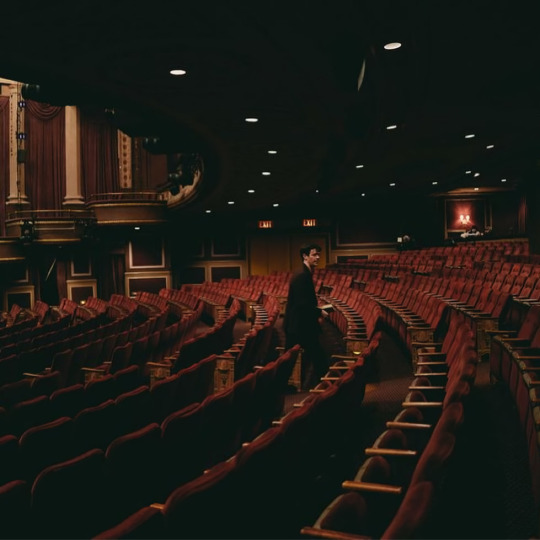


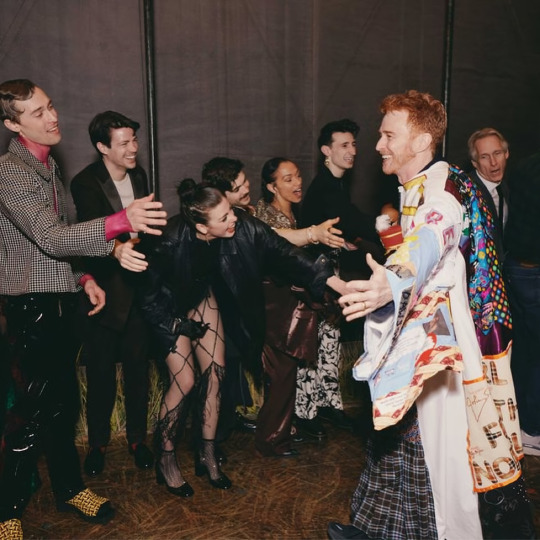
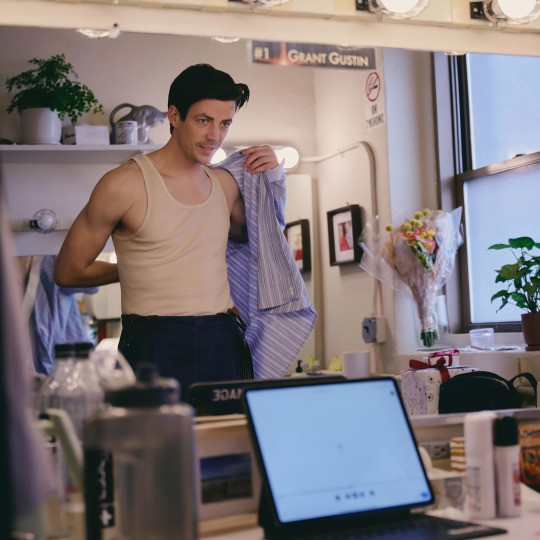




w4emusical “When they call places, there is this ritual we all do together as a company before the curtain goes up,” he says. “There is a line in the show: ‘Step right up and put some wind in your sails.’ So we form a circle and say ‘step right up’ over and over again until everyone has joined in.” - @grantgust for @townandcountrymag
#grant gustin#isabelle mccalla#paul castree#paul alexander nolan#gregg edelman#stan brown#loe de paul#sara gettelfinger#wade mccollum#gabriel olivera#eric bates#marissa rosen#keaton hentoff killian#caroline kane#alexandra royer#matthew varvar#water for elephants#town and country#jenny anderson photos#natalie powers photos#me edits
26 notes
·
View notes
Photo




Dead Man’s Curve (1998) dir. Dan Rosen
#dead man's curve#the curve#horroredit#filmedit#matthew lillard#dan rosen#horror#mygifs#another horribly lit night scene :)
311 notes
·
View notes
Text

spooky tuesday is a (now not so new!) podcast where we’re breaking down all of our favorite slashers, thrillers, monster movies and black comedies on the new scariest day of the week.
ever wonder what would happen if scream’s stu macher had a chance to grow up, go to college, and even set his sights on grad school? the curve (1998) — also known as dead man’s curve — is just the film to answer that question to predictably disastrous results. though you might not have heard of it, this movie is more than worth the watch, and it’s a film close to all of our hearts. on a new episode of spooky tuesday, we’re celebrating our boy matty lilly’s birthday by unearthing an underappreciated classic from one of horror’s favorite stars.
give spooky tuesday a listen on apple podcasts, spotify, iheart radio, or stitcher
#the curve#the curve 1998#dead man's curve#dead man's curve 1998#matthew lillard#dan rosen#keri russell#michael vartan#randall batinkoff#dana delany#tamara craig thomas#tamara marie watson#bo dietl#anthony griffith#horror#horror movies#horror movie review#movie review#movie review podcast#horror podcast#gay horror podcast#spooky tuesday#new spooky tuesday episode
10 notes
·
View notes
Text
Sports Media 101 - key to great radio and podcasting is magic!
youtube
View On WordPress
#Dan Dakich#Greg Solk#How to host a podcast#How to host a radio show#Janathan Brandmeier#Kevin Matthews#Mitch Rosen#Steve Dahl#Youtube
0 notes
Text
BUFFY READING LIST
As promised @possession1981 and I have compiled a list of Buffy the Vampire Slayer (and Angel) related academic text and books. I think this is a good starting point for both a long time fan and for someone just getting into the show, or just someone interested in vampire lore. I have included several books about the vampire lore and myth in general as well. Most of these are available online.
BOOKS
Fighting the Forces: What's at Stake in Buffy the Vampire Slayer; edited by Rhonda V. Wilcox & David Lavery
Buffy the Vampire Slayer and Philosophy - Fear and Trembling in Sunnydale by James B. South
Buffy Goes Dark: Essays on the Final Two Seasons of Buffy the Vampire Slayer on Television, edited by Lynne Y. Edwards, Elizabeth L. Rambo & James B. South
Buffy the Vampire Slayer: Myth, Metaphor and Morality by Mark Field
Televised Morality: The Case of Buffy the Vampire Slayer by Gregory Stevenson
Undead TV: Essays on Buffy the Vampire Slayer by Elana Levine
The Aesthetics of Culture in Buffy the Vampire Slayer by Matthew Pateman
Girls Who Bite Back: Witches, Mutants, Slayers and Freaks by Emily Pohl-Weary
Why Buffy Matters: The Art of Buffy the Vampire Slayer by Ronda Wilcox
Into Every Generation a Slayer Is Born: How Buffy Staked Our Hearts by Evan Ross Katz
The Lure of the Vampire: Gender, Fiction, and Fandom from Bram Stoker to Buffy the Vampire Slayer by Milly Williamson
Blood Relations: Chosen Families in Buffy the Vampire Slayer and Angel by Jes Battis
Sex and the Slayer: A Gender Studies Primer for the Buffy Fan by Lorna Jowett
Diseases of the Head: Essays on the Horrors of Speculative Philosophy; edited by Matt Rosen (chapter 2 Death of Horror)
Public Privates: Feminist Geographies of Mediated Spaces by Marcia R. England (chapter 1 Welcome to the Hellmouth: Paradoxical Spaces in Buffy the Vampire Slayer)
Open Graves, Open Minds: Representations of Vampires and the Undead From the Enlightenment to the Present Day; edited by Sam George and Bill Hughes (chapter 8 ‘I feel strong. I feel different’: transformations, vampires and language in Buffy the Vampire Slayer)
The Contemporary Television Series; edited by Michael Hammond and Lucy Mazdon (chapter 9 Television, Horror and Everyday Life in Buffy the Vampire Slayer)
Joss Whedon and Race: Critical Essays; edited by Mary Ellen Iatropoulos and Lowery A. Woodall III
Buffy and the Heroine's Journey: Vampire Slayer as Feminine Chosen One by Valerie Estelle Frankel
The Existential Joss Whedon: Evil and Human Freedom in Buffy the Vampire Slayer, Angel, Firefly and Serenity by J. Michael Richardson and J. Douglas Rabb
Buffy the Vampire Slayer 20 Years of Slaying: The Watcher's Guide Authorized by Christopher Golden
Reading the Vampire Slayer: The Complete, Unofficial Guide to 'Buffy' and 'Angel' by Roz Kaveney
Hollywood Vampire: The Unnoficial Guide to Angel by Keith Topping
Buffy the Vampire Slayer: The Monster Book by Christopher Golden
Slayer Slang: A Buffy the Vampire Slayer Lexicon by Michael Adams
What Would Buffy Do? The Vampire Slayer as Spiritual Guide by Jana Riess
ARTICLES, PAPERS ETC.
Bibliographic Good vs. Evil in Buffy the Vampire Slayer by GraceAnne A. DeCandido
Undead Letters: Searches and Researches in Buffy the Vampire Slayer by William Wandless
Weaponised information: The role of information and metaphor in Buffy the Vampire Slayer by Jacob Ericson
Buffy, Dark Romance and Female Horror Fans by Lorna Jowett
My Vampire Boyfriend: Postfeminism, "Perfect" Masculinity, and the Contemporary Appeal of Paranormal Romance by Ananya Mukherjea
Buffy, The Vampire Slayer as Spectacular Allegory: A Diagnostic Critique by Douglas Kellner
"Buffy the Vampire Slayer": Technology, Mysticism, and the Constructed Body by Sara Raffel
When Horror Becomes Human: Living Conditions in "Buffy the Vampire Slayer" by Jeroen Gerrits
Post-Vampire: The Politics of Drinking Humans and Animals in "Buffy the Vampire Slayer, Twilight", and "True Blood" by Laura Wright
Cops, Teachers, and Vampire Slayers: Buffy as Street-Level Bureaucrat by Andrea E. Mayo
"Not Like Other Men"?: The Vampire Body in Joss Whedon's "Angel" by Lorna Jowett
Buffy the Vampire Slayer and the Domestic Church: Revisioning Family and the Common Good by Reid B. Locklin
“Buffy vs. Dracula”’s Use of Count Famous (Not drawing “crazy conclusions about the unholy prince”) by Tara Elliott
A Little Less Ritual and a Little More Fun: The Modern Vampire in Buffy the Vampire Slayer by Stacey Abbott
Undressing the Vampire: An Investigation of the Fashion of Sunnydale’s Vampires by Robbie Dale
"And Yet": The Limits of Buffy Feminism by Renee St. Louis & Miriam Riggs
Meet the Cullens: Family, Romance and Female Agency in Buffy the Vampire Slayer and Twilight by Kirsten Stevens
Bliss and Time: Death, Drugs, and Posthumanism in Buffy the Vampire Slayer by Rob Cover
That Girl: Bella, Buffy, and the Feminist Ethics of Choice in Twilight and Buffy the Vampire Slayer by Catherine Coker
A Slayer Comes to Town: An Essay on Buffy the Vampire Slayer by Scott Westerfeld
Undead Objects of a “Queer Gaze” : A Visual Approach to Buffy’s Vampires Using Lacan’s Extended RSI Model by Marcus Recht
When You Kiss Me, I Want to Die: Gothic Relationships and Identity on Buffy the Vampire Slayer by Ananya Mukherjeea
Necrophilia and SM: The Deviant Side of Buffy the Vampire Slayer by Terry L. Spaise
Queering the Bitch: Spike, Transgression and Erotic Empowerment by Dee Amy-Chinn
“I Want To Be A Macho Man”: Examining Rape Culture, Adolescent Female Sexuality, and the Destabilization of Gender Binaries in Buffy the Vampire Slayer by Angelica De Vido
Staking Her Claim: Buffy the Vampire Slayer as Transgressive Woman Warrior by Frances H. Early
Actualizing Abjection: Drusilla, the Whedonversees’ Queen of Queerness by Anthony Stepniak
“Life Isn’t A Story”: Xander, Andrew and Queer Disavowal in Buffy the Vampire Slayer by Steven Greenwood
S/He’s a Rebel: The James Dean Trope in Buffy the Vampire Slayer by Kathryn Hill
“Once More, with Feeling”: Emotional Self-Discipline in Buffy the Vampire Slayer by Gwynnee Kennedy and Jennifer Dworshack-Kinter
“The Hardest Thing in This World Is To Live In It”: Identity and Mental Health in Buffy the Vampire Slayer by Alex Fixler
"Love's Bitch But Man Enough to Admit It": Spikes Hybridized Gender by Arwen Spicer
Negotiations After Hegemony: Buffy and Gender by Franklin D. Worrell
Double Trouble: Gothic Shadows and Self-Discovery in Buffy the Vampire Slayer by Elizabeth Gilliland
'What If I'm Still There? What If I Never Left That Clinic?': Faërian Drama in Buffy's "Normal Again" by Janet Brennan Croft
Not Gay Enough So You’d Notice: Poaching Fuffy by Jennifer DeRoss
Throwing Like A Slayer: A Phenomenology of Gender Hybridity and Female Resilience in Buffy the Vampire Slayer by Debra Jackson
“You Can’t Charge Innocent People for Saving Their Lives!” Work in Buffy the Vampire Slayer by Matt Davies
Ambiguity and Sexuality in Buffy the Vampire Slayer: A Sartrean Analysis by Vivien Burr
Imagining the Family: Representations of Alternative Lifestyles in Buffy the Vampire Slayer by Vivien Burr and Christine Jarvis
Working-Class Hero? Fighting Neoliberal Precarity in Buffy’s Sixth Season by Michelle Maloney-Mangold
A Corpse by Any Other Name: Romancing the Language of the Body in Mary Shelley's Frankenstein for the Adam Storyline in Buffy the Vampire Slayer by Amber P. Hodge
Sensibility Gone Mad: Or, Drusilla, Buffy and the (D)evolution of the Heroine of Sensibility by Claire Knowles
"It's good to be me": Buffy's Resistance to Renaming by Janet Brennan Croft
Death as a Gift in J.R.R. Tolkien’s Work and Buffy the Vampire Slayer by Gaelle Abalea
“All Torment, Trouble, Wonder, and Amazement Inhabits Here": The Vicissitudes of Technology in Buffy the Vampire Slayer by James B. South
Staking Her Colonial Claim: Colonial Discourses, Assimilation, Soul-making, and Ass-kicking in Buffy the Vampire Slayer by Jessica Hautsch
“I Run To Death”: Renaissance Sensibilities in Buffy the Vampire Slayer by Christine Jarvis
Dressed To Kill: Fashion and Leadership in Buffy the Vampire Slayer by Christine Jarvis and Don Adams
Queer Eye Of That Vampire Guy: Spike and the Aesthetics of Camp by Cynthea Masson and Marni Stanley
“Sounds Like Kinky Business To Me”: Subtextual and Textual Representations of Erotic Power in Buffyverse by Lewis Call
“Did Anyone Ever Explain to You What ‘Secret Identity’ Means?”: Race and Displacement in Buffy and Dark Angel by Cynthia Fuchs
“It’s About Power”: Buffy, Foucault, and the Quest for Self by Julie Sloan Brannon
Why We Love the Monsters: How Anita Blake, Vampire Hunter, and Buffy the Vampire Slayer Wound Up Dating the Enemy by Hilary M. Leon
Why We Can’t Spike Spike?: Moral Themes in Buffy the Vampire Slayer by Richard Greene and Wayne Yuen
Buffy, the Scooby Gang, and Monstrous Authority: BtVS and the Subversion of Authority by Daniel A. Clark & P. Andrew Miller
Are Vampires Evil?: Categorizations of Vampires, and Angelus and Spike as the Immoral and the Amoral by Gert Magnusson
BOOKS ABOUT VAMPIRE LORE AND MYTH IN GENERAL
The Vampire Lectures by Laurence A. Rickels
Our Vampires, Ourselves by Nina Auerbach
Vampires, Burial, and Death: Folklore and Reality by Paul Barber
The Secret History of Vampires: Their Multiple Forms and Hidden Purposes by Claude Lecouteux
The Vampire Cinema by David Pirie
The Living and the Undead: Slaying Vampires, Exterminating Zombies by Gregory A. Waller
Vampire Forensics: Uncovering the Origins of an Enduring Legend by Mark Jenkins
Slayers and Their Vampires: A Cultural History of Killing the Dead by Bruce A. McClelland
The History and Folklore of Vampires: The Stories and Legends Behind the Mythical Beings by Charles River Editors
Encyclopedia of Vampire Mythology by Theresa Bane
Vampires of Lore: Traits and Modern Misconceptions by A. P. Sylvia
The Vampire: A New History by Nick Groom
Vampyres: Genesis and Resurrection: from Count Dracula to Vampirella by Christopher Frayling
Race in the Vampire Narrative by U. Melissa Anyiwo
Vampires, Race, and Transnational Hollywoods by Dale Hudson
256 notes
·
View notes
Note
I'm not American but I heard that in the USA you have to finished another college degree before being allowed to start law school. Is it true? Has Marvel ever adressed this whole deal about Matt or they just act like he only studied law?
Great question! I will start by saying that I am not a lawyer, so I'm not the best person to ask about the US law school process. However, I believe I have some lawyers/law students following this blog, so please feel free to chime in with more details or if I get anything wrong here!
To my understanding, yes, you need to have an undergraduate/Bachelor's degree in order to be eligible for law school (in fact, I think you need an undergraduate degree to be eligible for any US graduate school program). Some colleges offer a Pre-Law major for students who know they want to continue on to law school, but I believe this is not a requirement, and that any undergraduate degree will do. In addition to that, aspiring law students also take the LSAT (Law School Admissions Test).
There is a ridiculous lack of continuity surrounding Matt and Foggy's college/law school education (I talked about it a bit in this post), but Matt's lawyer-ness has always been a firmly established part of his character, and so we do know that he (and Foggy) majored in Pre-Law.

Matt: "Uh, this is for you..."
Elektra: "You are the one on the steps..."
Matt: "Matthew Murdock. Matt. I'm in Pre-Law..."
Elektra: "Elektra Natchios, Political Science."
Daredevil vol. 1 #168 by Frank Miller, Klaus Janson, Dr. Martin, and Joe Rosen
46 notes
·
View notes
Photo
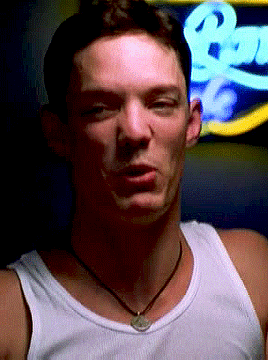

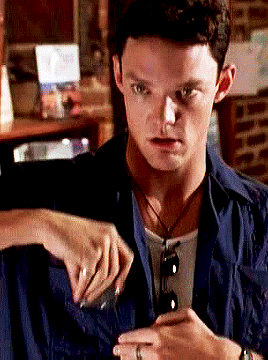



MATTHEW LILLARD as Tim in DEAD MAN’S CURVE (1998) dir. Dan Rosen
#filmedit#horroredit#matthewlillardedit#matthew lillard#dead man's curve#the curve#horror#gif#gif: x in x#*#was debating if i should post these bc of the quality......#but like what am i gonna do with them???
424 notes
·
View notes
Text
Water for Elephants - Broadway - March 3, 2024
Gregg Edelman (Mr. Jankowski), Stan Brown (Camel), Wade McCollum (Wade), Joe De Paul (Walter), Sara Gettelfinger (Barbara), Paul Alexander Nolan (August/Charlie), Isabelle McCalla (Marlena/June), Grant Gustin (Jacob Jankowski), Antoine Boissereau, Rachael Boyd, Paul Castree, Taylor Colleton, Isabella Luisa Diaz, Keaton Hentoff-Killian, Nicolas Jelmoni, Caroline Kane, Michael Mendez, Gabriel Olivera De Paula Costa, Samiel Renaud, Marissa Rosen, Charles South, Sean Stack, Matthew Varvar
do not repost
22 notes
·
View notes
Text

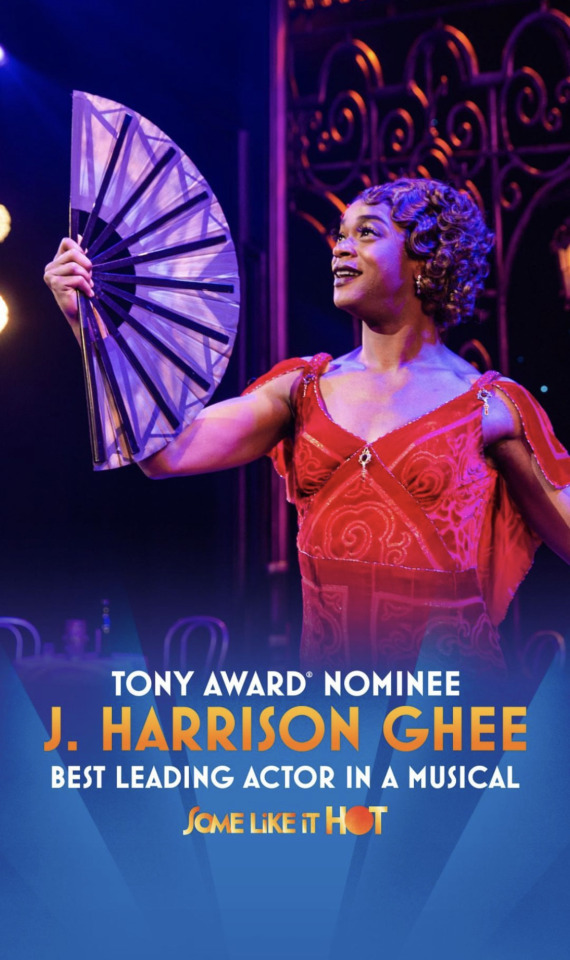

Some Like It Hot sweeping Tony noms!!
It’s also nominated for Best Book (Matthew Lopez and Amber Ruffin), Best Original Score (Marc Shaiman and Scott Whitman), Best Choreography (Casey Nicholaw), Best Orchestrations (Charlie Rosen and Bryan Carter), Best Scenic Design of a Musical (Scott Pask), Best Costume Design of a Musical (Gregg Barnes), Best Lighting Design of a Musical (Natasha Katz), Best Direction of a Musical (Casey Nicholaw), Best Featured Actress in a Musical (Natasha Yvette Williams), and Best Featured Actor in a Musical (Kevin del Aguila).
Some Like It Hot is officially the most Tony-nominated show this year, at 13 nominations!
#some like it hot musical#slih musical#slih#Christian Borle#j Harrison ghee#Tonys 2023#Broadway#Tony awards 2023
126 notes
·
View notes
Text
TDA Las Vegas 2024 Best Dancer Predictions!
mini female
stella brinkerhoff
belle marie arauz
savannah jackson
mini male
chase lang
brody schaffer
jeffrey wu
junior female
skylar wong
finley ashfield
lilly anderson
junior male
matthew conway
grayson niemcsyk
lincoln russo
teen female
taylor morrison
kira chan
kylie kaminsky
teen male
logan asuncion
gabriel kleeman
zachary roy
senior female
hailey bills
izzy howard
keira redpath
beth anne mcgowan
senior male
hudson pletcher
caleb abea
drew rosen
alonzo dock
these were my initial thoughts based purely off 1 watch of their recompete solos! i’m so back and forth on mini female, junior female, and senior male. it’s such a toss up. i’ll rewatch the solos and make any changes before saturday!
8 notes
·
View notes
Text
My WATER FOR ELEPHANTS Opinion • The Big Top on Broadway!
Going into this show, I already liked the songs, but I didn’t know the story at all because I haven’t read the book or seen the movie (I just knew there was a circus lol). I went into it fairly blind, and what I saw on that stage for two and a half hours was nothing short of whimsical. I’ve gotta give a review of my experience without giving too much of the plot away- so this is gonna be kind of informal. I’m basically just gonna talk about what I love about this show because it definitely has flaws like any show does, but I genuinely think people are being too hard on this show. It has so much potential, so much insane superhuman talent, and it is so well designed. Just because there aren’t 50 Cirque du Soleil-esque acts or Grammy winning pop songs in it doesn’t make it bad. Not to mention that the original source material was difficult to work with for sure! I think that while this show is far from mainstream, it still has that classic flashy Broadway show vibe- and what a relief that is. I could talk about this show and the talented people in it for ages. My messages and asks are always open, so if you want to share an opinion or experience, or wanna chat about the show, I’m here for it! Okay, time to dive in:
For some background information, Water For Elephants is set in America during the 1930s, (I think 1931) and of course, at a traveling circus called Benzini Brother’s Circus which is in great financial trouble and is definitely not the most spectacular circus during that time. They manage to stay afloat under the management of the ringmaster, August played by Paul Alexander Nolan. Throughout the show, we see signs that the circus performers and workers (Kinkers and Rousts), and the animals are not treated fairly by August.
Jacob Jankowski played by Grant Gustin is a young man on the run from his personal troubles and jumps onto the nearest train, not knowing or caring where it was going. He meets some dodgy characters who reveal themselves as Rousts or circus stagehand workers (Wade being the main, scariest one, played by Wade McCollum). Jacob soon meets an older Roust named Camel, played by Stan Brown. Camel convinces Jacob to stay at least one day. Jacob doesn’t love the idea, and neither does Wade. They come to an agreement and all parties reluctantly decide to work together for one day only. One day turns into a lot longer- and now the fun begins.
The ensemble had great dancers and amazing circus artists (who also all danced). The circus artists in this show are unnamed ensemble characters, so I will call them by their actual names (There were a few swings on the night I saw the show): Antoine Boissereau, Gabriel Olivera, Isabella Diaz, Keaton Hentoff-Killian, Nicolas Jelmoni, Harley McLeish, Sam Renaud, and Alex Royer.
The ensemble of dancers who play Kinkers and Rousts were: Brandon Block, Paul Castree, Caroline Kane, Marissa Rosen, Charles South, Sean Stack, Matthew Varvar, and Michelle West.
The understudies and swings who were on as leads and featured characters for this performance were: Samantha Gershman as Marlena, Taylor Colleton as Barbara, and Michael Mendez as Walter. The ensemble and circus swings were Brandon Block, Michelle West, and Harley McLeish. As usual, Gregg Edelman played Mr. Jankowski. Almost every single one of these performers was a puppeteer at some point in the show.
The great circus stunts start right off the bat in the second number “The Road Don’t Make You Young” when the cast sets up the big top tent. Needless to say, their Tony Performance of this song does not do this cast justice at all. Seeing this live was awesome. Especially Gabriel Olivera, Isabella Diaz, Keaton Hentoff-Killian, and Alex Royer doing impressive (and kinda scary) tricks on the Chinese Pole and then also singing and dancing with the rest of the company like it was nothing. The number also included many hand to hand tricks where Alex and Isabella were thrown and flipped and caught by their porters. They made it look effortless. Some other big circus numbers were “The Lion Has Got No Teeth”, “The Grand Spec”, and “Zostań”. In the span of these numbers, there were flips, hand to hand tricks, aerial acrobatics, juggling, Chinese pole, Cyr wheel, hula hoops, and more! There were even several quick scenes that was just a few circus performs on stage doing their thing!
Also, I have to say that Grant Gustin was great! He has a great voice and he portrayed Jacob brilliantly considering his character is pretty bland. Paul Alexander Nolan stole the show as many good villains tend to do. Samantha Gershman didn’t miss a beat as Marlena, and her voice was stunning! Wade McCollum as Wade was one of my favorite performances as far as acting goes (plus he has one hell of a voice). And the ensemble of both the dancers and circus performers were out of this world. The choreography was so fun to watch and the way it was mixed perfectly with the circus tricks had me on the edge of my seat every time there was a big group number.
My favorite three moments in the show:
3: The Stampede: For a show with lots of fun tricks, colorful costumes, and flashy numbers, things got pretty dark towards the end. I won’t get into the really dark part, but one scene near the end that was really well done was a scene without any singing or dancing- the Stampede. This scene was staged incredibly, and it was very haunting. The cast turned into puppeteers and their movements along with the lighting design, sound design, and Gregg Edelman’s narration caused it to be impossible to even blink during this scene. In particular, Caroline Kane did a fantastic job portraying Rosie the Elephant for this scene and throughout the show. She was one of the six people who puppeteered Rosie. Caroline controlled Rosie’s trunk and also conveyed Rosie’s emotions with her facial expressions. At times, she was the sole person responsible for making us believe there was an elephant on stage- and she was brilliant. She portrayed Rosie’s joy, pain, fear, and anger so so well!
2: The Dream/“Go Home”: This moment was before the stampede scene, and it was so cool to watch. Once again, the lighting design and staging was very well done, and Grant Gustin was excellent in this scene as he grappled with his inner thoughts. In Theatre, a dream sequence scene could sometimes be corny, but this one was necessary. Another very haunting moment in the show, this dream sequence came at a pivotal time in the plot, and gave us a deeper look into Jacob’s mind, along with a major choice that he had to make. The beginning of the scene was like something out of the 2013 Pippin revival, with the circus performers nightmarishly taunting Jacob on a dimly lit stage. August made an appearance too, also taunting Jacob- who’s conscience was trying to tell him to murder August. During this dream, the circus performers become an ensemble of Jacob’s fears and desires. They do daring stunts, walking and sliding backwards on tightropes, twirl in aerial hoops, two performers juggle knives- tossing them back and forth while Jacob stands still in between them. Jacob grabs a knife from midair and contemplates if he should use it. August cracks his whip at the lion, puppeteered by Gabriel. Soon Marlena and Rosie appear in Jacob’s dream as his only two comforting companions. During this nightmare, things start to get real for Jacob. The opening guitar of “Go Home” begins, and Jacob stands by and watches helplessly as his parents parish in a car accident. The way this car accident is staged is not loud or gruesome, but kind of peaceful- maybe since Jacob didn’t witness it when it happened, it’s how he imagined it or hoped it was like. There is no car at all, but it was easy to tell what’s happening due to the blocking and great choreography. Jacob’s parents are portrayed by Keaton and Alex- Keaton pretends to hold on to the wheel until blaring headlights flash in their faces and disaster strikes in slow motion. The other circus performers are assembled behind Jacob’s parents, staged as if they’re pushing them into their demise. After impact, Keaton and Alex are physically pulled out from that reality by the others, and back into the circus troupe. The movement and choreography in this scene is what carries the story as Jacob sings the song “Go Home”. The song ends with the ensemble softly singing “there’s nothing you won’t do/there’s nothing you can do” over and over as Jacob holds a knife, hovered over a sleeping August. The song ends with the characters back in reality. All in all, this scene was a great mesh of musical theatre, physical theatre, and circus.
1: “Easy”: When Jacob and the audience first meets Marlena. Here, she’s caring for her beloved injured horse Silver Star, puppeteered by two circus performers Antoine and Keaton. The horse puppet timidly approaches Marlena, limping. As Keaton left the scene, Antoine smoothly handed off the Silver Star puppet (head) to Marlena, who sang as she simultaneously soothed and controlled the horse’s head while it rested on her lap in pain. Then Antoine’s aerial silk act began. It was an outstanding and elegant thing to watch. He perfectly portrayed the spirit of Silver Star longing to be healthy and free. He swung over the audience in an aerial dance, and at one point, he swung out as the silks held him by his neck. His skills during that beautiful routine along with the emotional song that Samantha Gershman sang perfectly was a highlight for sure. Antoine was a standout circus artist and dancer, and was really fun to watch the whole show. If you haven’t gotten the chance, listen to “Easy” on the cast recording- it’s the best song in the album.
Some details I enjoyed:
One of the things I noticed while reading the playbill was the amount of Non-Binary performers in this show! There are five NB performers in W4E. (Let me know of you want to know who they are, because I don’t necessarily name drop here). Interestingly I noticed that every costume that one of the female presenting NB performers wore could be considered gender-neutral such as pants and overalls which looked just like the outfits the men and male presenting cast members wore in the show. I just thought that it was a nice touch that one of the NB performers got to wear gender-neutral costumes in a show that takes place in an era when those who were female presenting rarely wore pants or overalls (especially as a performer). Even the leotard they wore in circus scenes was the same as the male presenting circus performers! I’d love to think that this was a conscious choice by the costume designer and director to put the cast in costumes that they are comfortable in regardless of gender.
Every puppet was so intricate and beautifully designed. I sat fairly close but not too close, and I was able to see so many details of the puppets. They were so colorful, lively, and still so different from puppets in shows like the Lion King or Frozen. But like the Lion King, the actors controlling the puppets are very much included in the puppet’s identity. Their facial expressions and physical movements of their entire body, and even their costume colors play a huge part in each animal’s portrayal. However, in Lion King, many of the puppets are more costume than puppet. In W4E, the only animal that is worn as a costume is an Orangutan played by Alex. Overall, I think this was such a cool and original take on animal puppets on stage.
References to other songs in “Go Home” lyrics: Listening to the cast recording over and over, I realized that there are many melodic and lyrical references to other key songs in “Go Home” which I guess can be considered as the 11 o’clock number of W4E. In the song, there are melodic and lyrical references to the following songs: “Anywhere”, “Easy”, and “What Do You Do?” (GO LISTEN!!) I just love when songs that aren’t a Reprise have references to other songs in musicals. It’s very classic Broadway and great storytelling!
Personally, I loved Water For Elephants! The circus parts were the most fun to watch, and everyone in the cast was so amazing and seemed to be super tight-knit. You’re not going to W4E to delve into some deep subject in a contemporary musical and leave with a bitter sweet feeling and a great message, but does every new musical have to be like that nowadays?? I definitely recommend this show, especially for families or people who love the circus, puppets, or depression-era shows! Water for Elephants is a whimsical spectacle with so many fun moments. I think Broadway needs more of that.
If you’re still here, thank you for reading this entire thing lol!

#thank you for reading#broadway#musical theatre#water for elephants broadway#water for elephants musical#water for elephants#w4e#grant gustin#izzy mccalla#paul alexander nolan#pigpen theatre co.#musicals#theatre#circus#acrobats#jessica stone#theatre kid#tony awards#puppetry#les 7 doigts#broadway musicals#the flash#the lion king#frozen#pippin#pippin musical#nonbinary#non binary pride
4 notes
·
View notes
Photo




Michael Vartan and Matthew Lillard in Dead Man's Curve (1998) dir. Dan Rosen
#dead man's curve#the curve#filmedit#horroredit#michael vartan#matthew lillard#Dan Rosen#horror#mygifs
181 notes
·
View notes
Note
Hi! I wanted to ask if you had an all-stars list. Like recommendations of best of all time or personal favourites?
That's a great question, and I don't think I do! I feel like it'd be changing all the time. I can tell you a few by genre, if that helps?
Contemporary F/F Romance: Mistakes Were Made by Meryl Wilsner
Contemporary M/F Romance: Take a Hint, Dani Brown by Talia Hibbert
(My fave contemp M/M Romance was by an author I would definitely never recommend again, and I'm not as well read in it now as I used to be, so I'll just mention my most recent fave, which is You're a Mean One, Matthew Prince by Timothy Janovsky)
Women's Fic: Honey Girl by Morgan Rogers
Short Stories: Rainbow Rainbow by Lydia Conklin
Historical Romance: The Lady's Guide to Celestial Mechanics by Olivia Waite
Historical Mystery: Lavender House by LC Rosen
Historical Thriller: The City Beautiful by Aden Polydoros
Contemporary Thriller: Temper by Layne Fargo
Adult Fantasy: The Unspoken Name by AK Larkwood
YA Fantasy: Black Wings Beating by Alex London (trilogy), The Midnight Lie by Marie Rutkoski (duology), Girl, Serpent, Thorn by Melissa Bashardoust
YA Sci-Fi: Crownchasers by Rebecca Coffindaffer (series), The Disasters by MK England (standalone)
YA Paranormal: Cemetery Boys by Aiden Thomas
YA Magical Realism: Wild Beauty by Anna-Marie McLemore
YA Psych Thriller: The Wicker King by K. Ancrum
That feels like a long enough list to start with!
72 notes
·
View notes
Text
Housing vouchers are a cornerstone of US federal housing policy, offering aid to more than two million households. Vouchers are meant to provide the poor with increased choice in the private rental marketplace, enabling access to safe neighborhoods with good schools and higher-paying jobs. But do they?
The Voucher Promise examines the Housing Choice Voucher Program, colloquially known as “Section 8,” and how it shapes the lives of families living in a Baltimore neighborhood called Park Heights. Eva Rosen tells stories about the daily lives of homeowners, voucher holders, renters who receive no housing assistance, and the landlords who provide housing. While vouchers are a powerful tool with great promise, she demonstrates how the housing policy can replicate the very inequalities it has the power to solve.
Rosen spent more than a year living in Park Heights, sitting on front stoops, getting to know families, accompanying them on housing searches, speaking to landlords, and learning about the neighborhood’s history. Voucher holders disproportionately end up in this area despite rampant unemployment, drugs, crime, and abandoned housing. Exploring why they are unable to relocate to other neighborhoods, Rosen illustrates the challenges in obtaining vouchers and the difficulties faced by recipients in using them when and where they want to. Yet, despite the program’s real shortcomings, she argues that vouchers offer basic stability for families and should remain integral to solutions for the nation’s housing crisis.
Delving into the connections between safe, affordable housing and social mobility, The Voucher Promise investigates the profound benefits and formidable obstacles involved in housing America’s poor.
5 notes
·
View notes
Text
Full casting has been announced for Water for Elephants, a $25 million dollar musical coming to Broadway.
Starring in the production is Grant Gustin as Jacob Jankowski, and Isabelle McCalla as Marlena. The cast also features Gregg Edelman as Mr. Jankowski, Paul Alexander Nolan as August, Stan Brown as Camel, Joe De Paul as Walter, Sara Gettelfinger as Barbara, and Wade McCollum as Wade.
Newly announced for the musical's company are Brandon Block, Antoine Boissereau, Rachael Boyd, Paul Castree, Ken Wulf Clark, Taylor Colleton, Gabriel Olivera de Paula Costa, Isabella Luisa Diaz, Samantha Gershman, Keaton Hentoff-Killian, Nicolas Jelmoni, Caroline Kane, Harley Ross Beckwith McLeish, Michael Mendez, Samuel Renaud, Marissa Rosen, Alexandra Gaelle Royer, Asa Somers, Charles South, Sean Stack, Matthew Varvar, and Michelle West.
Water for Elephants features a book by Rick Elice and music and lyrics by PigPen Theatre Co. Previews begin February 24, 2024 at the Imperial Theatre on Broadway, with opening night set for March 21.
8 notes
·
View notes
Text
Blake Shelton will make a cameo on the twangy and carefree album-closing "Ain't Got a Worry." Old Dominion front man Matthew Ramsey says Shelton himself picked that song out of a batch they sent him, after the artists had been tossing around the idea of working together on a track.
"When Blake started talking about us, it was a little surreal. But it was also cool. [Bandmate] Trevor [Rosen] had co-written [Shelton's 2015 single] 'Sangria,' which was a big hit for him, so it wasn't completely crazy to ask him to join us on a track," Ramsey explains. "We sent some songs over, and he picked 'Ain't Got a Worry'... Funny thing is, if we'd really looked at the songs, of course he did. That's exactly how Blake lives."
Old Dominion actually put two versions of "Ain't Got a Worry" on their new album: A solo version of the song comes in at track 14, then reprises as a Shelton duet at the end of the record.
12 notes
·
View notes